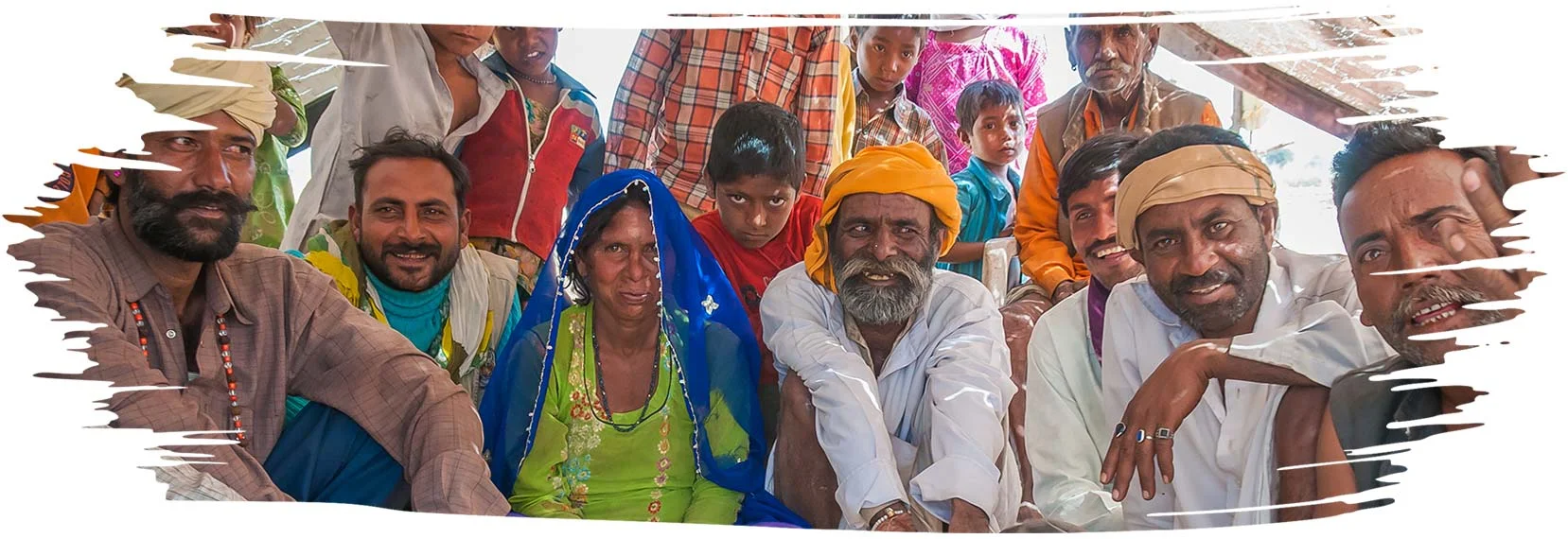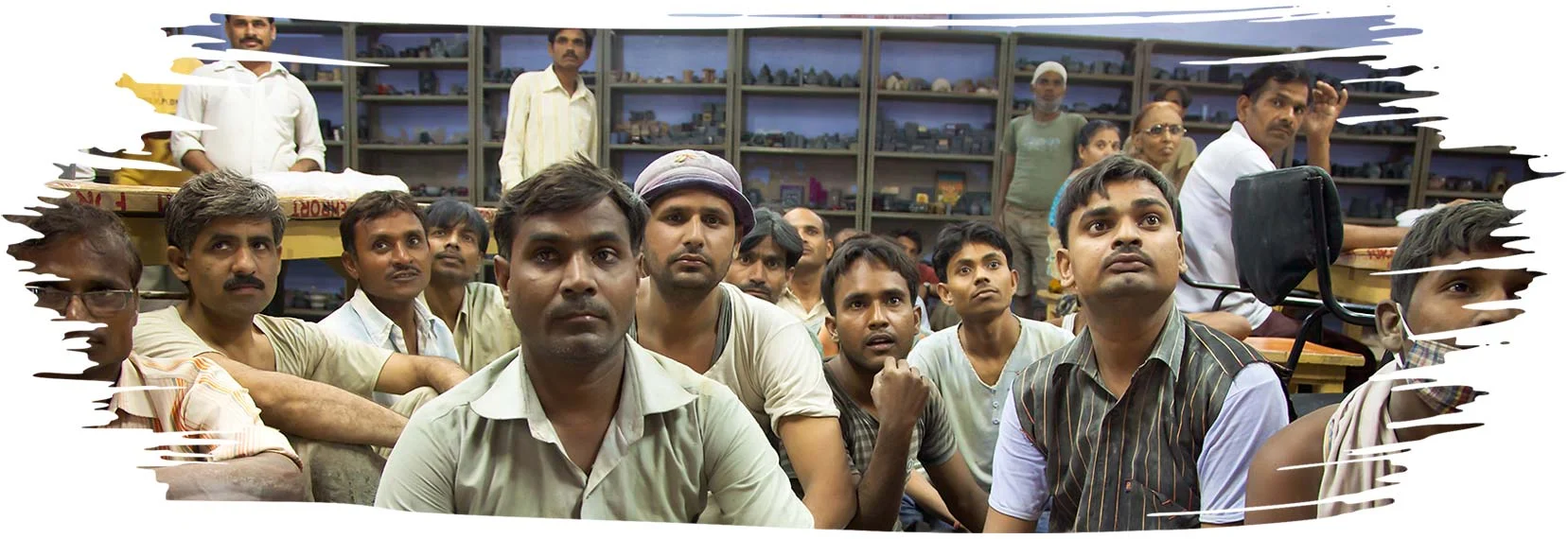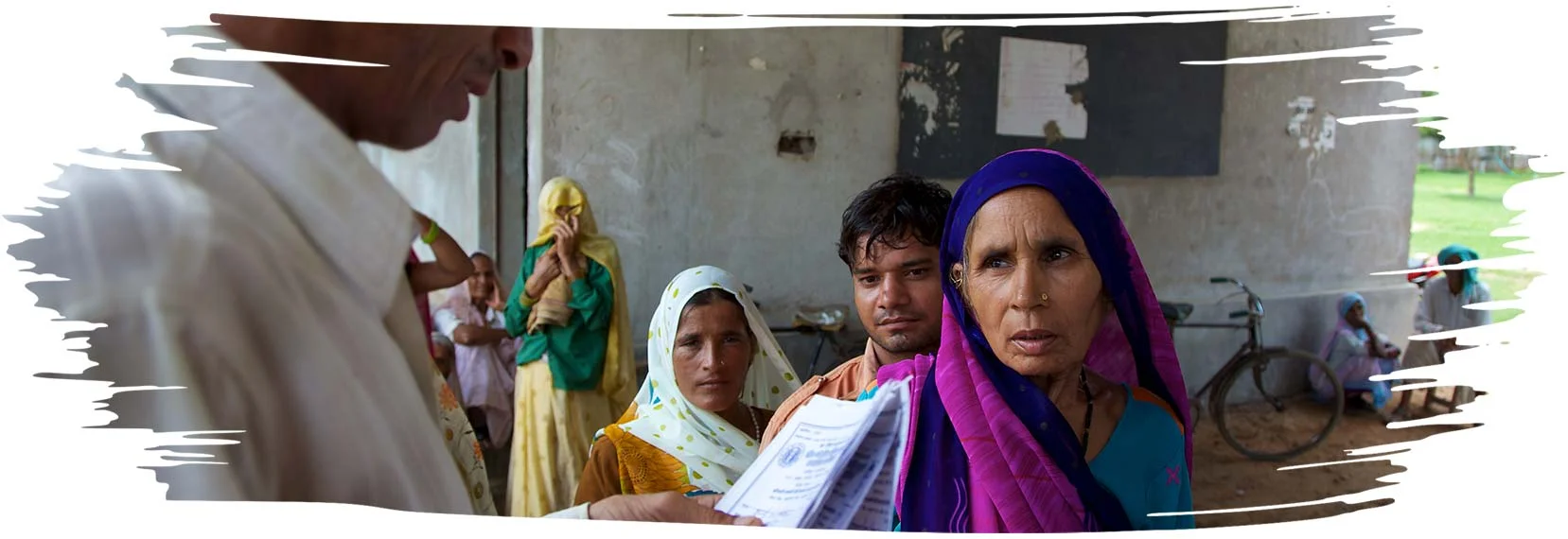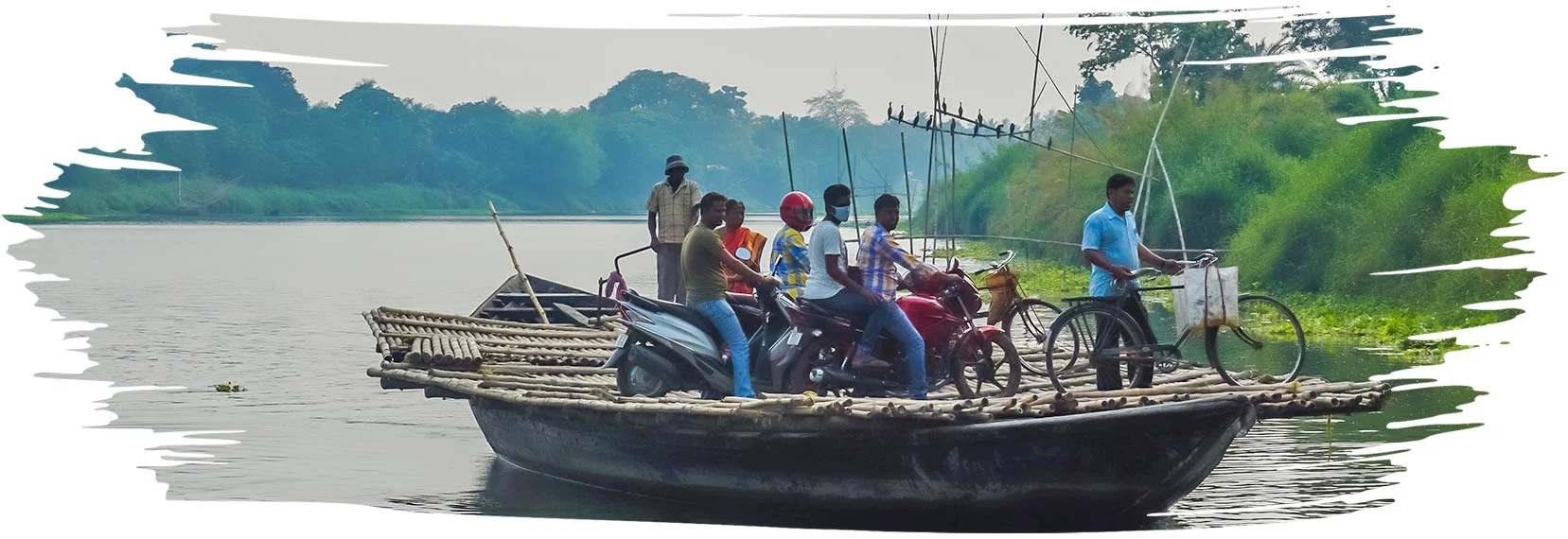Navigating Change – The BCS Model

The ‘koodams’ or the exploration spaces were created in the workshops, where the participants of the change process first gathered. The koodam was the place where people learnt to engage in critical analysis of themselves, their dreams, values and vision for themselves, and saw themselves as dynamically interrelated with others, in the governance process. As they became more comfortable with sharing and `critiquing’ themselves and others, and learnt to work as a team, they also expanded the quality of their relating thereby widening and deepening the ‘circles of consensus’, bringing more and newer people into the process of change. Widening the `circles of consensus’ remains the key thrust of the change process, ensuring that the governance processes becomes `democratised’.
Exploring the Change Process

The change process can at best described as an amalgam of multiple processes, as a continuous dialectical dialogue between thinking, learning and doing in three spaces, namely the work-shop, the workspace and the work-site. These processes can best be described as a triad of recall-reflect-revise or experience, analyse and synthesise. The workshop therefore was never visualised as the site of the change process, it was best understood as a site of critical engagement with one’s own experience. The sites of the change process were the workspace, where the change makers, whether referred to as catalysts or champions initiated change projects involving their colleagues, sub-ordinates and superiors. These change projects were geared both to make the work spaces as sites of change, but also the sites where the thesis of change met with the anti-thesis of resistance challenging the change maker to evolve new learning syntheses. The work spaces were also the sites where the change makers attempted replicating the koodam and when the attempt was successful, the workspace became a locus of support, collectivity and creativity. The workspace became the locus of both expanding consciousness blending with widening circles of solidarity. The change initiatives at the work space were intended to provide the impetus for change initiatives at the work site, the locus of engagement of the change maker with the citizen, who was both a partner in the change as well as a beneficiary in the change. The work site was hence the central point for creative energies of the change maker to be invested in the betterment of the citizens at the bottom of the pyramid, who were invited in turn to become change makers in their own human and social environment, triggering yet another cycle of experimentation, engagement and change, a veritable amalgam of multiple spirals of qualitative betterment of human and social environments.
The process comes full circle when the change maker brings her/his experimental and experiential learning through engagement with her/his human and social environment to the work-shop as the melting pot of learning allowing for new synergies of discovery to trigger new syntheses of understanding in an effort to bridge the gap with the others and their experiences of the energies of change. The work-shop also provides an opportunity for a celebration of creativity through mutual recognition of the initiatives and investments of the others in the transformation of the living realities of the citizen. Each workshop therefore revolves around three multilateral processes:
- `Breaking Barriers – Building Bridges’;
- ‘Confronting Challenges – Creating Convergence’, and
- `Synergising Strengths – Strategising Success’
which are conceptually elaborated below.
It is important to note that the three processes elaborated below are neither in the order of importance nor in an order of sequence. Each workshop can best be understood as a churning or melting pot with the participants traversing one or other process, individually or collectively. Each workshop is also a manifestation of the change makers moving in a rising spiral of expanding knowledge, deepening experience, intensifying engagement, sharpening analyses and enriching syntheses of knowing, feeling and doing.
In effect, the challenge of designing the workshops, necessitates constant improvisation and adaptation depending on the willingness of the group to engage in critical, analytical, open and honest sharing and discussion. This means that the overall goals of each workshop are reached not necessarily through typecast training methods and exercises but by changing methods to suit the dynamic of each situation.
Breaking Barriers – Building Bridges

Addressing issues of the `person’ and the `personal’, exploring the ways in which people relate to one another and creating a climate of camaraderie based on shared experiences and group learning.
The first process that the participants engage in every workshop is “Breaking Barriers, Building Bridges”, a term that admits of many facets. Questioning ideologies, stated or unstated, recognised or not, but consciously adopted or unconsciously acquired which determines the manner in which we see, perceive and understand and interpret phenomena; reconstructing identities, generally inherited and unconsciously internalized hierarchies of difference, caste and class, which condition interaction and association; dismantling imbibed hierarchies of the mind in terms of imparted and received knowledge, rectitude and error; resolving acquired hierarchies of administrative practice surrounding superior sub-ordinate positioning, obedience and subservience; recognising hierarchies of relationships that spill over from work space into social spaces. Breaking barriers was a self-initiated critical exploration of the force-field of difference in an effort to enter into the space of oneness.
Building bridges focused on horizontalising the learning, sharing and caring space, through internalisation of a collectively created space of equality, trust, honesty, unconditionality and equanimity through the creation of the koodam, a space for the ‘exchange of wisdom’ and the maturation of the ‘wise’. Building bridges addressed itself to building a new social order of equity and equality that would take the place of an order constructed on hierarchy and difference. Building bridges also consisted in creating new networks of solidarity between the participants based on shared ideals and convergent initiatives.
Confronting Challenges, Creating convergence

While the first stage, `Breaking Barriers, Building Bridges’ was an intense process of
deconstruction of the generally unconscious and very rarely willed, dimensions and manifestations of diversity, difference, discrimination, sub-ordination and subservience, the second stage was geared
to confronting challenges of multiple un-freedoms in the personal, organisation and
communitarian spaces. This helps in creating convergence of minds, wills and energies.
Seen thus, convergence was not the formal act of different functionaries sitting together
to contribute their respective resources. Convergence was the process of the `integration’ of
different functional specialists into a single, cohesive team fired by a common concern to
ensure sustainable, and equitable development in which the `responsibility’ of change was commonly shared.
Moving away from the compartmentalised functioning of every specialist contributing only with resources they had command over; they also took responsibility for the entire process; thus sharing was not when `asked’ but also by `giving’ voluntarily. This sets the context for the third stage.
Synergising Strengths – Strategising Success

Examining the strengths of different stake holders critical to the success of any venture leading to sustainable development, to bring about synergy in the use of energies and resources and evolving strategies to ensure success of such schemes in a practical manner in the actual field context.
The second stage engaged in the dialectical dialogue while engaging with challenges of multi-tiered un-freedoms in the effort to create convergence of thought and action across hierarchies and regimentation that accompanies variance of goals, guidelines and grounded action. The dialogue was through strategic collaborations with colleagues and with communities in the numerous self-visualised change projects that the participants engaged in with their colleagues in the work space and the community in their work sites. The change projects triggered creative imagination, stimulated joint action and often lead to new synergies of collaboration.
The third stage delved into the learning from the new synergies of creativity and strengths of collaboration. Collective reflections led to recognising the value of collective endeavour, the discovery of internal solidarity, the strengths of collaboration and the celebration of the
koodam as the root of synergistic energy of expanding freedoms.



